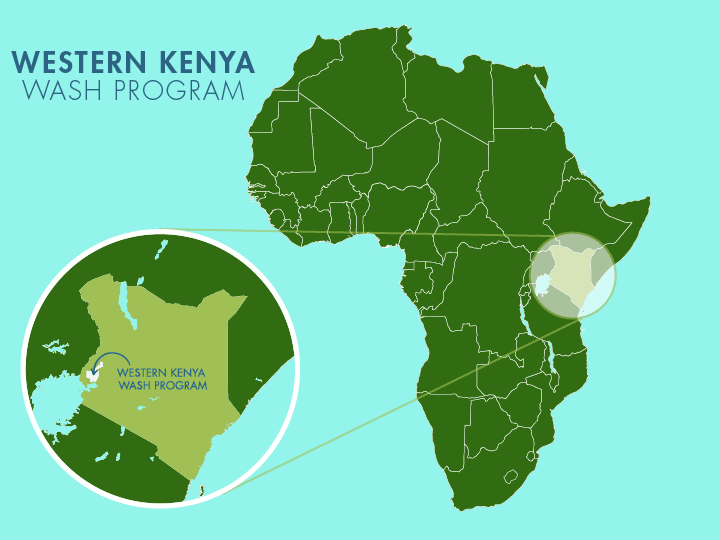Fifteen-year-old Phaustine is a student in the Lukorido community, which has 210 residents. She faces daily challenges accessing safe water. Her community’s waterpoint is broken down, and as a result, she and her family often face water-related illnesses. The Juma Otuma spring, their only official water source, is broken down. They often are forced to rely on surface water.

Community members collect unsafe river water.
Field officer Stella Injani described the area where they collect surface water. "Animals drink from the river, [and] all rubbish is washed into the river. The area is filthy."
Phaustine explains, “Whenever [I] am sick or one of my family members is sick, it always causes tension and panic at home.” Illnesses in her household create anxiety and disruption, making it difficult to focus on normal routines like school and chores.

Phaustine.
She recalls a particularly difficult experience: “It was when I had skin rashes all over my body, and it was badly itching. I could not concentrate in class, I was forced to go home and missed sitting for that day's exam. This made me have a drop in my scores, which I felt bad.” The incident left her discouraged, knowing that her education was being affected by something as basic as unsafe water.

Collecting water that will likely make her ill.
When she or her family members fall ill, they rely on traditional remedies. “My parents looked for a traditional herbalist who gave out some herbal medicine to take and some to apply on my skin, where I end up feeling better.” These treatments help her recover, though she knows that better water access would prevent many of these problems in the first place.
Sickness also interferes with school attendance. “ If the sickness is transmitted, you cannot be allowed to mingle with others or attend school until treated.”
The breakdown of the local waterpoint has changed life for Phaustine and her neighbors. “Water is exposed to contamination channels which we are forced to treat before taking it, unlike before when we used to drink directly from the source.” Despite these new difficulties, she remains determined to stay on top of her studies. “I have adjusted my study timetable and trying my level best to maintain my academic performance.”

Phaustine hauls water home with other community members.
Looking ahead, Phaustine has clear goals for her future. “My plan is to work hard in my studies and become successful so as I can be of help to my family and other people.” Her sense of purpose keeps her motivated, even in the face of hardships.
When asked how she feels about fetching water, she responds with gratitude and a sense of perspective. “I have no issues with going to fetch water because at least we can afford to have that water, unlike some areas where people have to walk long distances in search of water.”
Despite the challenges, Phaustine’s story is one of resilience, determination, and hope. Her words reveal a young girl who refuses to let the lack of clean water derail her dreams of success and helping others. Imagine her potential with clean water access!
Steps Toward a Solution
Our technical experts worked with the local community to identify the most effective solution to their water crisis. They decided to safeguard the existing flowing spring.
Spring Protection
Springs are natural water sources that originate from deep underground. As water travels through various layers of the earth, it undergoes a natural filtration process, making it cleaner and safer to drink. To protect these spring sources from contamination, we construct a waterproof cement structure around layers of clay, stone, and soil. This design channels the spring water through a discharge pipe, facilitating easier, faster, and cleaner water collection.
Chlorine Dispenser
As an extra measure towards water quality safety, uniquely engineered chlorine dispensers are installed at all of our spring protection projects so community members can treat their water with pre-measured doses of chlorine. The chlorine treats any possible contamination and stays active for two to three days, ensuring water stays safe to use even when stored at home. Chlorine delivery and maintenance of the dispensers are part of our ongoing community support.
Community Education & Ownership
Hygiene and sanitation training are integral to our water projects. Training is tailored to each community's specific needs and includes key topics such as proper water handling, improved hygiene practices, disease transmission prevention, and care of the new water point. Safe water and improved hygiene habits foster a healthier future for everyone in the community. Encouraged and supported by the guidance of our team, a water user committee representative of the community's diverse members assumes responsibility for maintaining the water point, often gathering fees to ensure its upkeep.

 Protected Spring
Protected Spring
 Rehabilitation Project
Rehabilitation Project


















